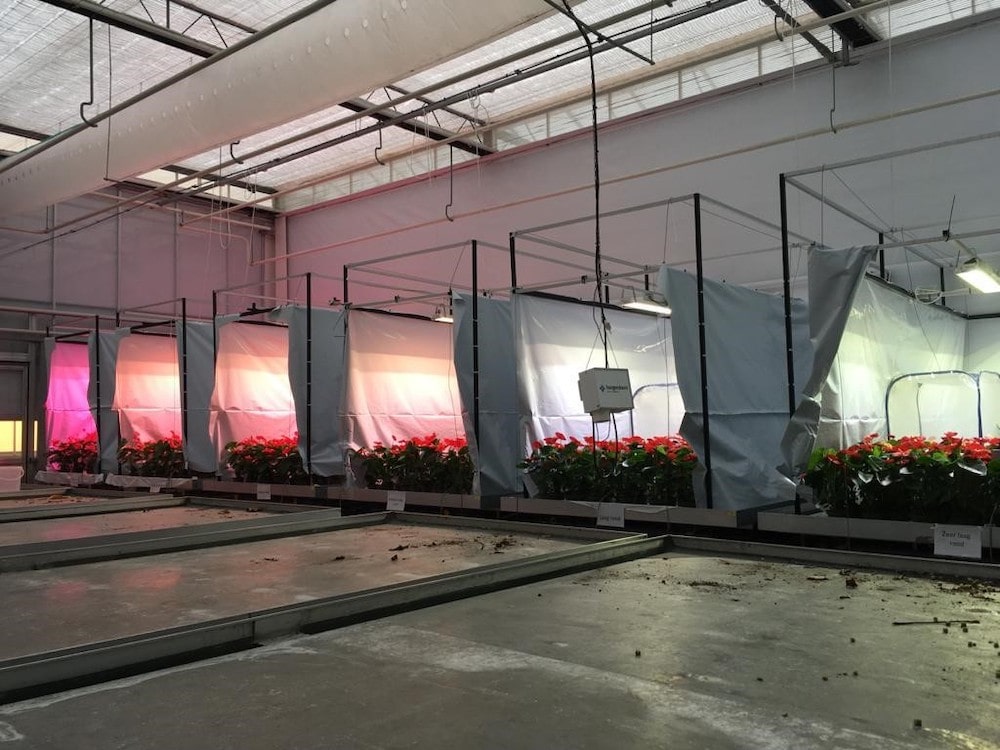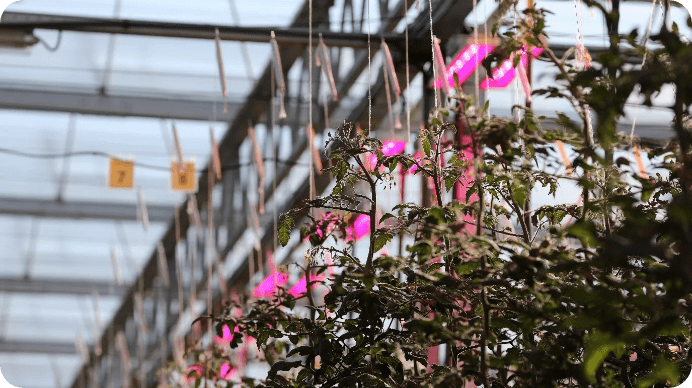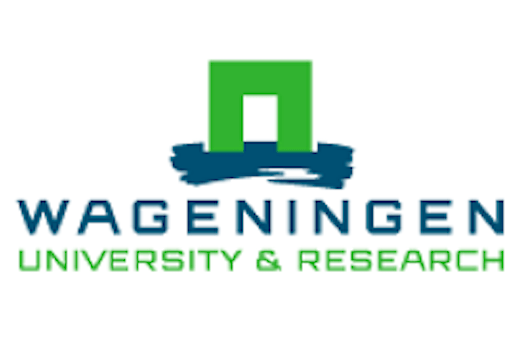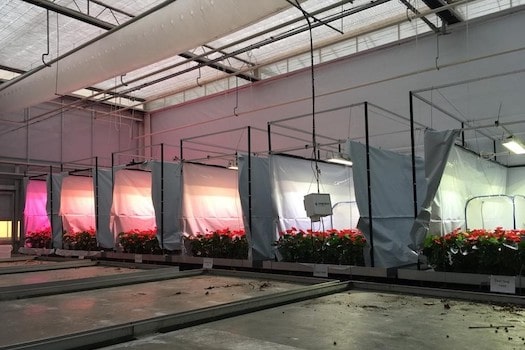Wageningen University joined forces with Food Autonomy to deliver best lighting conditions for pot anthurium in greenhouse conditions
View gallery Netherlands
Netherlands
 Flexi-Grow Toplight
Flexi-Grow Toplight
 Spectral trials (greenhouse section)
Spectral trials (greenhouse section)
 2021
2021
The customer
Wageningen University & Research is the most famous university worldwide for horticulture. It is the only university in the Netherlands that focuses specifically on the theme of ‘healthy food and living environment’, meanwhile they work closely with governments and the business community.
The Greenhouse Horticulture Business Unit Wageningen University & Research (WUR) concentrates on applied research for greenhouse horticulture, covering all aspects of cultivation (except for breeding). Scientists at the business unit test and develop crop models, lighting recipes, sensors, irrigation, and crop protection strategies with a focus on sustainability. Their main goal is inputs and emissions reduction while improving crop yield and quality.


The expectations
In the initial phase of the experiments, WUR had been using LEDs by another lighting company with fixed market available spectrum. However, this spectrum did not give the plants the shape the researchers were looking for. drs. Nieves Garcia Victoria, a scientific researcher of ornamental crops at WUR had a hypothesis that a specific spectrum can contribute to reducing stem elongation of pot anthuriums. (Anthurium is one of the most important pot plant crops in the Netherlands.)
Using LED lamps provided by Food Autonomy, the aim of the experiment was to test a range of different spectra to reduce stem elongation in the plants. The lamps were used to test 6 different light spectra and come up with the ideal light conditions.
The solution
The trial, which started in March (2021), included 2 cultivation rounds, each 8 weeks long. Using shading screens, scientists simulated winter conditions in the greenhouse allowing only a small proportion of natural light. The ratio was 20% natural light and 80% from lamps to create typical winter conditions, which is the most critical period for cultivating with artificial light. In the first round of cultivation, lamps were used for 12 hours and in the second round for 16 hours as researchers were experimenting with the optimal duration of day length


“Finding the right light spectrum is critically important for growers. The switch from HPS lamps to LEDs needs to be made and growers need to be precise when they decide on the spectrum and light intensity they use. LED is unquestionably a more sustainable solution as it reduces energy consumption but choosing the best light spectrum (the colours to be used) are all very important aspects that have an impact on the crop. There is definitely need for more research in this area,” according to drs. Nieves Garcia Victoria

The result
“Measurements show that changing the light spectrum resulted in an improvement in the shape of the plants and we were able to reduce the level to which the stems of the flowers elongate,” said Nieves Garcia Victoria. Results of the experiment proved that the hypothesis that a different spectrum can contribute to reducing stem elongation was correct, she added.
The evaluation of the data gathered during the experiment is in progress and larger scale testing may follow, drs. Nieves Garcia Victoria said, adding that she would be pleased to use the same Food Autonomy lamps in any follow-up experiments. Food Autonomy’s ability to create customized spectra on a very short notice was a key factor for choosing their product, she said.
Location
Wageningen University & Research (WUR), Bleiswijk, The Netherlands
Case study gallery
The product




